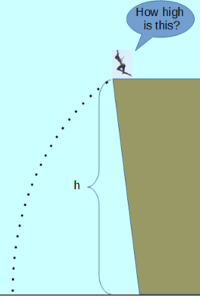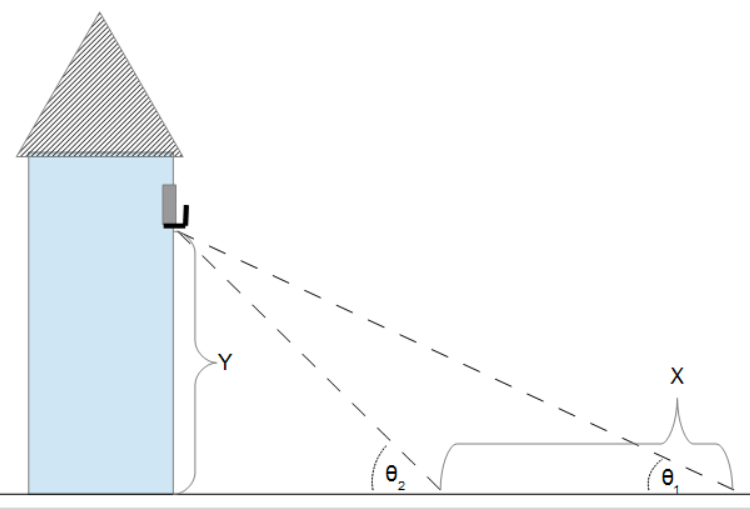Free Fall
Free Fall, in this application, is when an object is acting under the force gravity alone. The downward motion can be estimated relatively well using gravity models.
 Free Fall Calculators
Free Fall Calculators
- Free Fall (time): Computes the duration of time that an object will be in free fall based on the height and the acceleration due to gravity.
- Free Fall (distance): Computes the distance that an object will be in free fall based on the duration of the fall and the acceleration due to gravity.
- Free Fall (Velocity at Impact): Computes the final velocity of an object after a free fall based on the height and the acceleration due to gravity.
- Free Fall (Energy on Impact): Computes the kinetic energy at impact based on the height of free fall, acceleration due to gravity and the mass of the object.
- Model Rocket Altitude: Computes the estimated maximum altitude of a rocket based the distance from the launch point and the angle to top point of flight (zenith).
- Object Height by Time to Drop: Estimates the height of an object based on the time it takes for an object to drop from the top of it.
- Elevation of Object (angles and separation): Computes the height of an object based on two angle measurements and the distance between them.
- Distance Traveled at Constant Acceleration: Computes the distance traveled by an object after a period of time, based on its initial distance from the origin, initial velocity and a constant acceleration.
- g (acceleration due to gravity at sea level): Acceleration due to Gravity (g) at sea level on Earth is 9.80665 m/s2.

Free Fall Calculators and Collections
Free Fall Equations
- Duration of Free Fall KurtHeckman Use Equation
- Free Fall (distance) TylerJones Use Equation
- Free Fall (Energy on Impact) KurtHeckman Use Equation
- Free Fall (time) TylerJones Use Equation
- Free Fall (Velocity at Impact) KurtHeckman Use Equation
- Object Height by time to drop KurtHeckman Use Equation
- `-h=1/2(-g)Deltat^2` KurtHeckman Use Equation
Free Fall WikiClips
- Attachments
No attachments |

